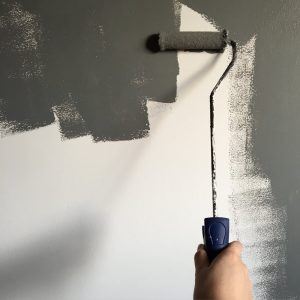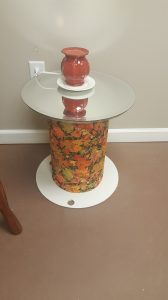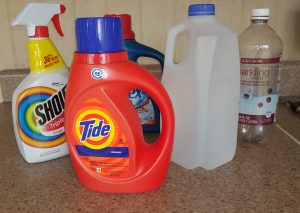Whether you’re redecorating, adding some new furniture or upcycling what you’ve already got, there are more and more ways to carry out eco-friendly home improvements that spruce up your house without harming the environment.
Here are five eco-friendly home improvements and green materials for your next DIY project to give you the house of your dreams without creating an environmental nightmare.
1. Low VOC Paints

Traditional paints contain volatile organic compounds, or VOCs, which act as solvents that evaporate from the paint during drying. However, these compounds contribute to the emissions that come from the paint itself.
Luckily, there’s a growing number of low VOC paints to choose from – this is ‘green paint’ but not in the color sense of the word!
A low-to-no solvent content has other advantages too. Low VOC paint doesn’t have that strong chemical paint smell and is safe to use throughout the house, including in children’s rooms.
Finally, remember to buy only as much paint as you need, and use all of it by applying extra coats until it’s all gone – you’ll get a less patchy finish and you can then recycle the empty paint cans.
2. Furniture Upcycling
This is a huge subject and you’ll find plenty of ideas on this blog for specific projects, but just keep an open mind when you’re thinking of throwing old furniture in the trash.
Even broken furniture can be repaired to make it solid and safe to use, and you can either hide the repair with upholstery or a coat of paint, or leave it on show to give the piece its own unique character and a sense of age.


3. Simple Storage
Upcycle empty containers to make simple storage solutions wherever you need them in the home – coffee jars can become highball glasses for drinks, hand wash dispensers can be refilled with dish soap, and plastic takeout containers can be rinsed and used to organize the refrigerator or freezer.
Directly reusing materials is even better than recycling them, so before you trash that tray or junk that jar, just ask yourself if you could reuse it somewhere else or even upcycle it into part of a larger storage unit.

4. Light Work
Create a much wider range of usable spaces in your home by installing eco-friendly lights in different areas.
Functional lighting is a great way to give rooms a more dynamic look. You will eliminate glaring bright zones and other areas that are left in shadow when not in use.
It doesn’t just feel cozy. By using energy-efficient lighting like LEDs and other low-energy bulbs, and by only lighting the zones you want to use, you can save on power, emissions, and energy costs too.
5. Habitat Gardens

All-natural planting is good for the environment, but you can double down on that benefit by focusing on habitat planting.
By using plants that give the local wildlife a place to live, you can create a garden rich in movement and vitality – a home for the birds, bees, and butterflies.

